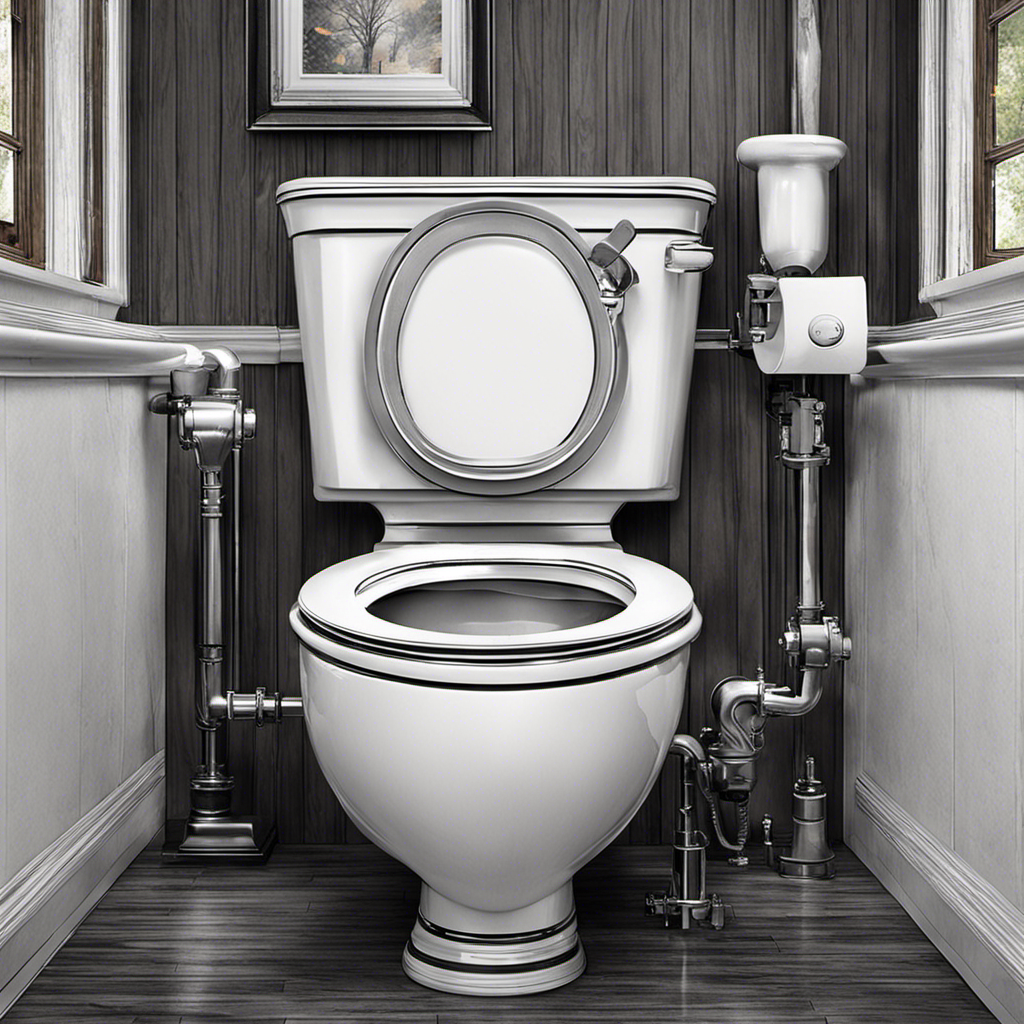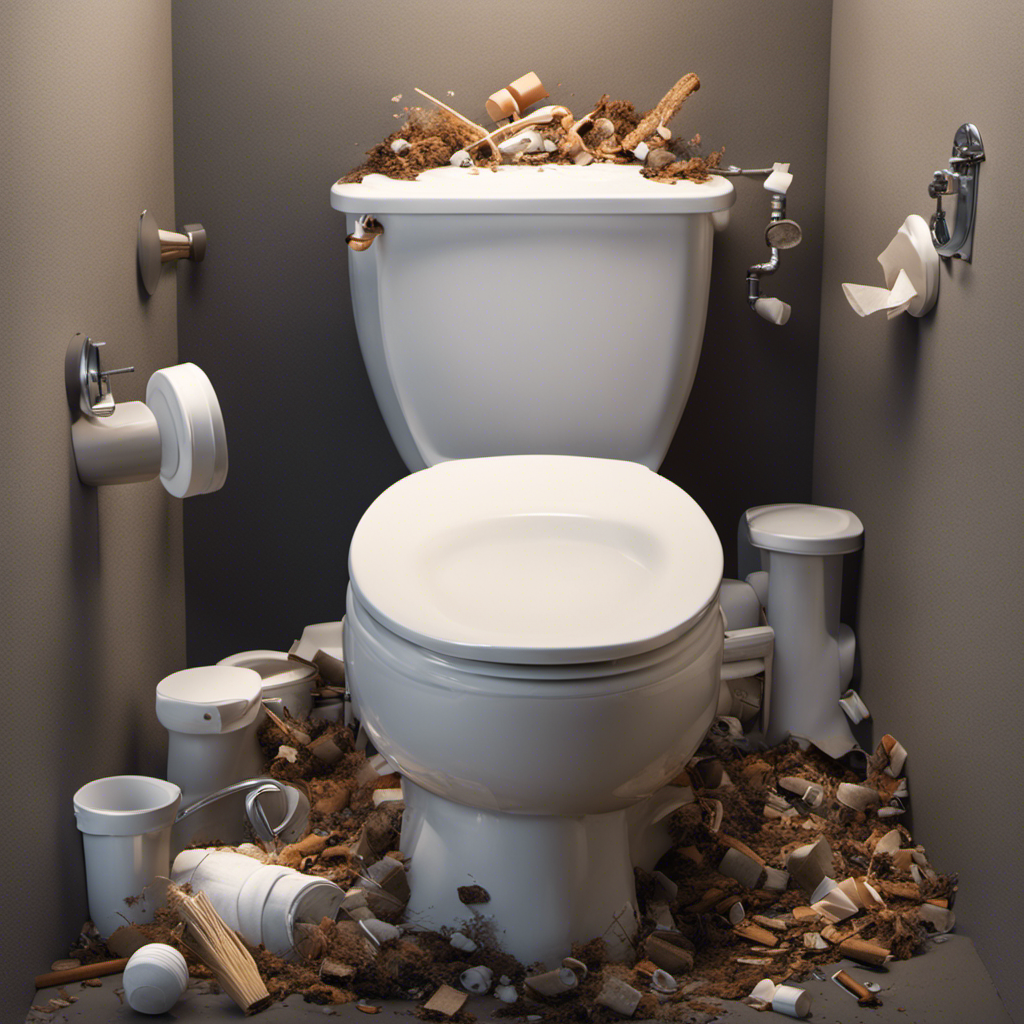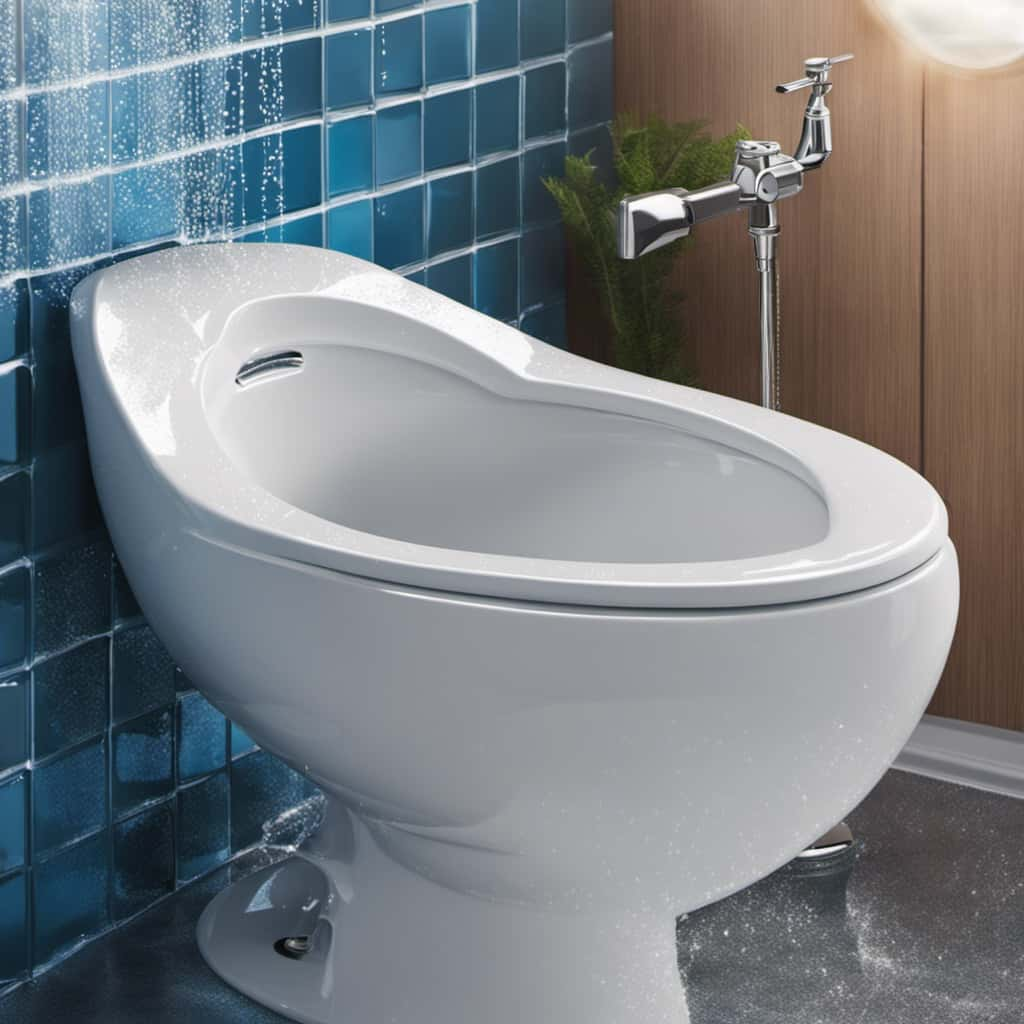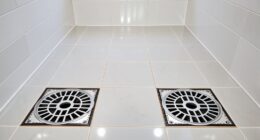Like a car that won’t start but isn’t out of gas, a toilet that won’t flush but isn’t clogged can be a perplexing and frustrating problem. In this article, I will explore the various reasons why your toilet may refuse to flush despite appearing unclogged.
From issues with the flushing mechanism to problems with the water supply and malfunctioning components, we will delve into the possible culprits behind this stubborn toilet dilemma.
So, let’s dive in and uncover the mysteries of a non-flushing toilet.
Key Takeaways
- A worn-out or misaligned flapper valve can prevent a toilet from flushing properly.
- Low water pressure can make it difficult to flush a toilet.
- A faulty water valve can disrupt the water supply to a toilet.
- Malfunctioning toilet components such as the flush valve and lift chain can hinder the flushing mechanism.
Common Causes of a Non-Clogging Toilet Blockage
One of the most common reasons why a toilet won’t flush but isn’t clogged is a faulty flapper valve. The flapper valve is a small rubber flap located at the bottom of the toilet tank. Its purpose is to seal the flush valve opening and prevent water from flowing into the toilet bowl until the flush handle is pressed.
However, if the flapper valve is worn out or not properly aligned, it can cause the toilet to have a weak flush or not flush at all. When the flapper valve doesn’t seal properly, water from the tank may leak into the toilet bowl, causing the water level to rise and preventing a proper flush.
In this case, replacing the flapper valve should solve the issue and restore the toilet’s flushing capability.
Issues With the Flushing Mechanism
To fix the issue, you should check if the flushing mechanism is properly connected and functioning. The flushing mechanism in a toilet consists of several components that work together to ensure a proper flush. Here are some possible issues with the flushing mechanism that could be causing your toilet not to flush:
- The flush handle may be loose or broken, preventing it from properly activating the flushing mechanism.
- The chain connecting the flush handle to the flapper valve in the toilet tank may be too loose, preventing the flapper valve from opening fully.
- The flapper valve itself may be worn out or damaged, causing it to leak and not create a sufficient seal.
Problems With the Water Supply
I’ve noticed that there are a couple of common issues that can affect the water supply in a building.
One of the most frequent problems is low water pressure, which can make it difficult to use faucets and showerheads.
Another issue that can disrupt the water supply is a faulty water valve, which can cause leaks or restrict the flow of water.
Both of these problems can be inconvenient and may require professional assistance to fix.
Low Water Pressure
If your toilet won’t flush but isn’t clogged, you might be experiencing low water pressure. This can be frustrating, but luckily there are some DIY solutions for this issue.
Here are a few troubleshooting tips to help you resolve the problem:
-
Check the water pressure in your home. Low water pressure can affect the flushing power of your toilet. You can use a pressure gauge to measure the water pressure coming into your house. If it’s below 40 psi, you may need to contact a plumber to adjust the pressure.
-
Inspect the toilet tank. Sometimes, a faulty fill valve or a partially closed shut-off valve can cause low water pressure. Ensure that the shut-off valve is fully open and the fill valve is functioning properly.
Faulty Water Valve
Check if the faulty water valve is causing the low water pressure in your toilet. A faulty water valve can often be the culprit behind low water pressure issues.
To troubleshoot a faulty water valve, start by turning off the water supply to your toilet. This can usually be done by turning the valve clockwise. Once the water supply is turned off, inspect the valve for any visible signs of damage or leakage. If you notice any issues, such as a broken or corroded valve, it may be necessary to replace the water valve.
Water valve repair is a relatively simple task that can be done with basic plumbing tools. However, if you are not comfortable performing the repair yourself, it’s best to consult a professional plumber for assistance.
Malfunctioning Toilet Components
When it comes to troubleshooting toilet flushing issues, two common culprits are a faulty flush valve and a broken lift chain.
The flush valve is responsible for releasing water from the tank into the bowl during a flush. If it is not working properly, the toilet may not flush at all or may only partially flush.
On the other hand, a broken lift chain can prevent the flapper from lifting properly, resulting in a weak or non-existent flush.
Identifying and addressing these issues promptly can help restore the normal functioning of your toilet.
Faulty Flush Valve
To fix the issue with your toilet not flushing but not being clogged, first, you’ll want to check if the flush valve is faulty. The flush valve is responsible for releasing water from the tank into the bowl, creating the flushing action. If it’s not working properly, the toilet won’t flush effectively.
Here are some troubleshooting tips and replacement parts you may need:
- Check the flush valve for any cracks or damage. If you notice any, it’s likely the culprit and will need to be replaced.
- Ensure the flush valve seal is in good condition. A worn or broken seal can prevent a proper flush and may need to be replaced.
- Consider replacing the flapper valve, as it can also cause issues with flushing if it’s worn or not sealing properly.
Broken Lift Chain
If your toilet is not flushing properly and it’s not due to a clog, a broken lift chain could be the issue. The lift chain is an essential part of the toilet mechanism that connects the handle to the flapper. When you press the handle, the lift chain lifts the flapper, allowing water to flow into the bowl and initiate the flushing process. However, if the lift chain is broken or detached, it can prevent the flapper from lifting, resulting in a weak or ineffective flush. To check if your lift chain is broken, simply remove the tank lid and observe the handle mechanism. If the chain is loose or disconnected, it will need to be reattached or replaced. By fixing the broken lift chain, you can restore proper flushing functionality to your toilet.
| Common Causes of Broken Lift Chain | Solutions |
|---|---|
| Rust or corrosion | Replace the lift chain with a new one |
| Improper installation | Reattach the chain to the handle and flapper |
| Wear and tear over time | Replace the lift chain with a new one |
Blockages in the Drainage System
Sometimes, blockages in the drainage system can prevent a toilet from flushing properly. When this happens, it’s important to address the issue promptly to avoid further complications.
To ensure proper toilet maintenance and usage, consider the following:
-
Preventing Blockages
-
Avoid flushing non-flushable items such as wipes, feminine hygiene products, or paper towels.
-
Use toilet paper sparingly to prevent excess build-up in the pipes.
-
Clearing Blockages
-
Start by using a plunger to dislodge the obstruction gently.
-
If the blockage persists, try using a toilet auger to break it up and clear the pipes.
Other Possible Reasons for a Non-Flushing Toilet
One possible reason for a non-flushing toilet could be a faulty flushing mechanism. When the flushing mechanism is not working properly, it can prevent water from entering the toilet bowl and creating the necessary pressure to flush waste down the drain.
One important component of the flushing mechanism is the siphon jet, which helps to create a strong suction force to remove waste. If the siphon jet is clogged or damaged, it can hinder the flushing process.
Additionally, a malfunctioning flapper valve or a broken handle can also contribute to a non-flushing toilet. It is important to check these components and ensure they are in good working condition to restore proper flushing functionality to the toilet.
Conclusion
In conclusion, a non-flushing toilet can be a frustrating and puzzling situation. But fear not, for there is often a simple explanation.
Just like a river flowing through a narrow passage, our toilets rely on a smooth and uninterrupted flow of water to flush away waste. From issues with the flushing mechanism to problems with the water supply, there are various culprits to consider.
So, next time your toilet refuses to flush, remember to investigate these potential causes and keep the river of sanitation flowing freely.










